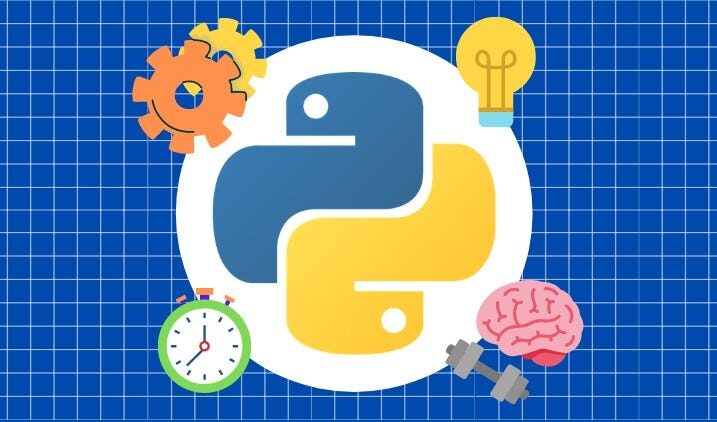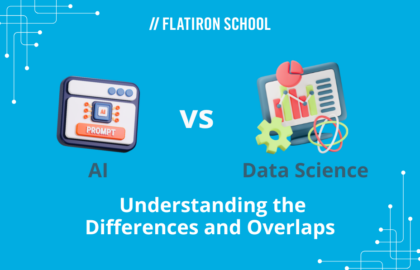Python remains one of the most popular programming languages, and for good reason. Whether you’re a beginner looking to break into tech or an experienced programmer expanding your skill set, Python is a versatile and powerful tool. From data science and machine learning to web development and software development, Python is the go-to language for solving real-world problems.
In this guide, we’ll explore why Python is so popular, how to get started, and the best resources to help you learn Python step-by-step.
What Is Python?
Python is a high-level programming language known for its simplicity and readability. It’s widely used across industries for tasks like data analysis, automation, and building web applications. Python’s clean syntax makes it an excellent choice for beginners, while its extensive ecosystem of modules and libraries makes it powerful enough for advanced applications.
Why Learn Python?
- Beginner-Friendly: Python’s intuitive syntax and straightforward structure make it easy to learn, even for those with no prior programming experience.
- Versatility: Use Python for data science, web development, machine learning, artificial intelligence, and more.
- Community Support: With millions of users worldwide, Python has a vast community and countless resources to help you along the way.
Why Is Python So Popular?
Python’s popularity continues to grow because of its wide range of applications and robust ecosystem. Here’s why it’s a top choice for learners and professionals alike:
- Data Science and Machine Learning: Python is the backbone of data science and machine learning, with libraries like Pandas, NumPy, and TensorFlow.
- Web Development: Frameworks like Django and Flask make Python a powerful option for building dynamic websites.
- Automation: Python is widely used to automate repetitive tasks, saving time and effort.
- Beginner-Friendly: Python’s simple syntax and clear structure make it accessible to beginners.
How to Get Started with Python
If you’re ready to dive into Python, here’s a step-by-step guide to help you get started:
1. Install Python
Start by downloading and installing Python 3 from the official Python website. Python 3 is the latest version and is recommended for all new learners.
2. Learn the Fundamentals
Begin with the basics of Python programming, including:
- Data Types: Strings, integers, floats, booleans, and tuples.
- Control Flow: Learn how to use for loops, while loops, and conditional statements like if and else.
- User Input: Understand how to take input from users and process it.
- Functions: Write reusable blocks of Python code to simplify your programs.
3. Explore Python Libraries
Python’s libraries are what make it so powerful. Here are some must-know libraries for beginners:
- Pandas: For data analysis and manipulation.
- NumPy: For numerical computations and working with arrays.
- Matplotlib: For creating visualizations and charts.
- Django: For building web applications.
4. Work on Python Projects
Hands-on experience is the best way to learn. Start with beginner-friendly Python projects like:
- Building a calculator.
- Creating a to-do list app.
- Analyzing a dataset using Pandas.
- Automating tasks in Excel.
5. Debugging and Iteration
Learn how to debug your code and improve it through iteration. Python’s error messages are beginner-friendly, making it easier to identify and fix issues.
Applications of Python
Python’s versatility makes it a valuable skill across industries. Here are some of its most common applications:
- Data Science: Analyze and visualize data to uncover insights.
- Machine Learning: Build predictive models using libraries like Scikit-learn and TensorFlow.
- Web Development: Create dynamic websites with frameworks like Django and Flask.
- Automation: Write scripts to automate repetitive tasks, such as data entry or file management.
- Artificial Intelligence: Use Python to develop AI models and algorithms.
Is Python Easy to Learn for Beginners?
Yes! Python is one of the most beginner-friendly programming languages. Its high-level nature means it’s easier to read and write compared to low-level languages like C or Assembly. Plus, Python’s extensive libraries and community support make it easier to find solutions and learn as you go.
Python for Beginners: Key Concepts
Here are some essential concepts every beginner should master:
- Data Structures: Learn about lists, dictionaries, and tuples.
- Control Flow: Understand how to use loops and conditional statements.
- Functions: Write reusable blocks of code to simplify your programs.
- Modules: Import and use pre-built Python modules to extend functionality.
- Debugging: Learn how to identify and fix errors in your code.
Why Choose Flatiron School?
At Flatiron School, we focus on equipping students with the skills they need to succeed in tech. Our programs include:
- Hands-On Learning: Work on real-world projects to build your portfolio.
- Career Support: Get help with resumes, interviews, and job placement.
- Comprehensive Curriculum: Learn Python alongside other essential tools and technologies.
The Future of Python
Python’s role in tech is only growing. As industries continue to adopt AI, machine learning, and data-driven decision-making, Python will remain a cornerstone of innovation. Whether you’re a beginner or looking to upskill, learning Python is a smart investment in your future.
Get Started Today
Ready to start your Python journey? Enroll in one of Flatiron School’s programs to gain the skills and experience you need to succeed in tech. With Python as your foundation, the possibilities are endless.
Frequently Asked Questions
Which language should you learn first?
If your primary interest is data science, machine learning, or artificial intelligence, Python is the most versatile and in-demand option. It covers more use cases (including web development, automation, cloud, and big data) and has a lower learning curve—ideal for beginners and those pursuing a career change. Once you have a strong foundation in Python for data science, learning R adds specialized capabilities, especially for statistical modeling and visualization-heavy roles.
Can I Learn Both R and Python?
Yes. Mastering both R and Python can significantly enhance your career opportunities in data science, analytics, and computer science. Learning both offers several benefits. Career flexibility increases, allowing you to work across academia, research, startups, healthcare, or enterprise tech. Your technical skills expand as you combine R’s strengths in statistical analysis and visualization with Python’s capabilities in machine learning and automation. This dual expertise also optimizes your job search, as resumes showcasing projects in both languages stand out and create more opportunities. Additionally, familiarity with both ecosystems broadens your problem-solving toolkit for data analysis, troubleshooting, and optimization tasks. It’s recommended to focus on one language first, preferably Python, to build a solid foundation, and then add R when you’re ready to deepen your statistical and visualization skills.
What industries use Python the most?
Python is widely used across a variety of industries due to its versatility and ease of use. In finance, it supports algorithmic trading and risk analysis, while in healthcare, it powers data analysis and AI-driven diagnostics. The entertainment industry leverages Python for recommendation systems on streaming platforms, and the education sector uses it to build e-learning platforms and tools. In retail, Python helps with inventory management and customer behavior analysis, making it a valuable tool across diverse fields.
What are some common mistakes beginners make when learning Python?
When learning Python, beginners often make several common mistakes. One is skipping the basics and jumping into advanced topics without mastering the fundamentals. Another is not practicing enough, focusing too much on theory without getting hands-on coding experience. Many also ignore error messages, missing the opportunity to learn how to debug and understand Python’s feedback. Additionally, beginners sometimes overload themselves by trying to learn too many libraries at once, rather than focusing on building strong core Python skills.




